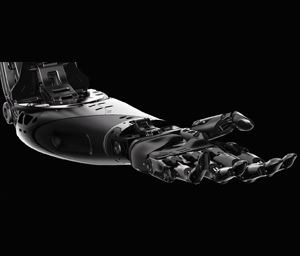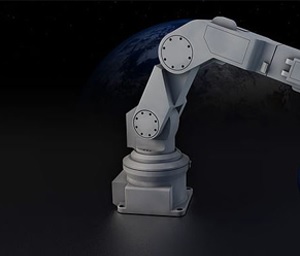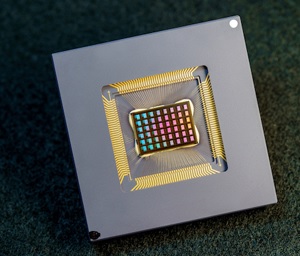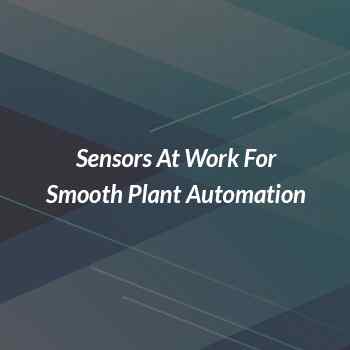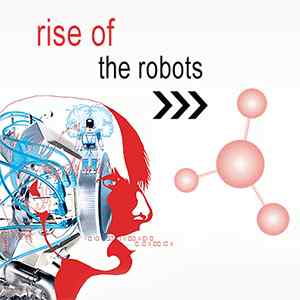Innovative Applications of Bionics in Industrial Automation

Introduction:
The integration of exoskeletons, prosthetics, genetic algorithms, and other cutting-edge technologies into industrial automation is revolutionizing manufacturing and robotics. These advancements are leading to improved efficiency, safety, and collaboration between humans and machines. Industries are leveraging wearable technology, sensor fusion, biomedical engineering, brain-computer interfaces, human-machine interface, memory-centric neuromorphic computing, autonomous robots, soft robotics, cognitive robotics, neuromodulation, and prosthetic limbs to achieve unprecedented levels of innovation and productivity.
Exoskeletons for Enhanced Performance
Exoskeletons are at the forefront of revolutionizing industrial work environments, offering a paradigm shift in enhancing human capabilities. These exoskeletons are not just mere mechanical suits; they embody the synergy of cutting-edge biomedical engineering and advanced wearable technology. Through intricate sensor fusion mechanisms, they seamlessly integrate with the human body, creating a symbiotic relationship between man and machine.
The core of these exoskeletons lies in their adaptability, thanks to sophisticated genetic algorithms that optimize performance based on individual needs and tasks. This level of personalization extends to the realm of brain-computer interfaces, where the user's intentions are translated into actions with unparalleled precision. This human-machine interface is not just about control; it's about synergy, where the boundaries between biological and artificial intelligence blur. Underlying these advancements is the evolution of memory-centric neuromorphic computing, enabling exoskeletons to learn, adapt, and anticipate user movements in real-time. This cognitive leap extends beyond traditional robotics, embracing concepts such as soft robotics and cognitive robotics, where machines mimic not just the physicality but also the cognitive processes of humans.
Moreover, exoskeletons are paving the way for autonomous assistance, with autonomous robots seamlessly integrating into workflows, providing support, and augmenting human capabilities. This fusion of neuromodulation and robotics is not just about functionality; it's about empowerment, restoring mobility and independence through advanced prosthetic limbs that redefine what it means to be human in the age of technological convergence.
Prosthetics for Adaptive Functionality
Incorporating prosthetics into industrial automation brings adaptive functionality to the forefront. Advanced prosthetic limbs equipped with sensor fusion technology can precisely mimic human movements, offering dexterity and precision in manufacturing tasks. This biomedical engineering marvel enhances the quality and accuracy of operations. The integration of prosthetics enables adaptive and responsive actions within automated systems. Sensor fusion techniques in prosthetic limbs allow for real-time feedback, improving control and coordination in complex manufacturing environments. This synergy between biomedical engineering and industrial automation paves the way for innovative solutions in human-machine interaction.
Genetic algorithms play a crucial role in optimizing prosthetic performance, adapting to user preferences and evolving needs. This wearable technology revolutionizes workplace ergonomics by seamlessly integrating prosthetic capabilities with existing automation frameworks. Moreover, brain-computer interfaces enhance communication between humans and machines, facilitating intuitive control of autonomous robots and cognitive robotics systems. Memory-centric neuromorphic computing further refines prosthetic capabilities, enabling adaptive learning and context-aware decision-making.
In essence, the convergence of prosthetics with industrial automation drives efficiency, accuracy, and safety in manufacturing processes. This synergistic approach harnesses the full potential of biomedical advancements, shaping a future where adaptive functionality is seamlessly integrated into the fabric of automated industries.
Genetic Algorithms and Machine Learning
In the domain of industrial automation, the fusion of genetic algorithms and machine learning algorithms represents a paradigm shift. These sophisticated algorithms work in tandem to optimize processes, leveraging data analytics to drive efficiency and cost-effectiveness.
Genetic algorithms act as evolutionary tools, iteratively improving solutions based on fitness criteria. When combined with machine learning, they create a powerful framework for process optimization. By analyzing vast amounts of data, these algorithms uncover hidden patterns and correlations, leading to data-driven decisions that enhance performance and productivity. The synergy of genetic algorithms and machine learning is particularly impactful in industrial settings. They enable automated learning from historical and real-time data, enabling systems to adapt and evolve in response to changing conditions. This adaptive capability is crucial for continuous improvement in automation processes.
Moreover, the integration of genetic algorithms and machine learning fosters innovation in automation strategies. It enables the development of intelligent systems capable of self-optimization and predictive maintenance. This evolutionary approach transforms industrial landscapes, driving efficiency gains and cost reductions. The synergy of genetic algorithms and machine learning is reshaping automation strategies, paving the way for smart, adaptive, and data-driven operations. This transformative combination represents a cornerstone in the evolution of industrial automation, propelling industries towards greater competitiveness and sustainability.
Wearable Technology and Sensor Fusion
The integration of wearable technology and sensor fusion heralds a new era in data-driven decision-making within industrial environments. This integration empowers workers with real-time insights, enhancing situational awareness and performance optimization.
Wearable technology encompasses a range of devices, from smartwatches to exoskeletons, designed to capture and transmit biometric and environmental data. When coupled with sensor fusion techniques, these devices provide a comprehensive view of human-machine interactions and workplace conditions. Workers equipped with wearables can monitor vital parameters such as heart rate, temperature, and fatigue levels, enabling proactive health management and risk mitigation. The integration of sensor fusion enables contextual awareness, allowing for real-time adjustments based on dynamic work conditions.
Moreover, wearable technology facilitates predictive maintenance by monitoring equipment status and performance metrics. This preemptive approach minimizes downtime and optimizes asset utilization. The human-machine interface enabled by wearable technology and sensor fusion streamlines communication and collaboration between workers and automated systems. This seamless interaction improves decision-making and response times, enhancing overall efficiency and productivity. In essence, the synergy between wearable technology and sensor fusion transforms workplace dynamics, creating a connected and intelligent ecosystem that prioritizes safety, performance, and continuous improvement.
Memory-Centric Neuromorphic Computing
At the forefront of autonomous robots and soft robotics, memory-centric neuromorphic computing revolutionizes the landscape of industrial automation. These systems, inspired by neural networks, imbue machines with cognitive capabilities, fundamentally altering their functionality and task flexibility.
Memory-centric neuromorphic computing mimics the architecture and functionality of the human brain, enabling robots to learn from experience, adapt to changing environments, and comprehend contextual nuances. This synaptic plasticity facilitates rapid problem-solving and decision-making in dynamic work settings. In the domain of industrial automation, neuromorphic computing elevates robotic intelligence to unprecedented levels. Autonomous robots equipped with neuromorphic capabilities exhibit enhanced sensory perception and behavioral flexibility, enabling them to navigate complex environments and execute tasks with precision and efficiency.
Furthermore, soft robotics systems benefit immensely from memory-centric neuromorphic computing. These flexible, adaptive machines leverage neural-inspired algorithms to perform delicate manipulations and interactions in collaborative workspaces, ensuring safe and efficient human-robot interaction. The convergence of memory-centric neuromorphic computing with autonomous robots and soft robotics marks a significant leap forward in automation technologies. This synergistic integration unlocks new possibilities for cognitive robotics, paving the way for intelligent systems that seamlessly blend human-like capabilities with mechanical efficiency.
Cognitive and Neuromodulation Technologies
In the domain of cognitive robotics, the integration of neuromodulation techniques marks a significant stride towards enhancing robotic cognition and interaction. These cutting-edge technologies empower robots with human-like cognitive capabilities, enabling them to interpret human intentions, execute complex commands, and collaborate seamlessly with human workers.
Neuromodulation techniques, inspired by neuroscience, modulate the activity of neural circuits within robots, mimicking the plasticity and adaptability of the human brain. This synaptic plasticity enables robots to learn, unlearn, and relearn tasks, fostering continuous improvement and flexible adaptation in dynamic work environments. In practical terms, cognitive robotics equipped with neuromodulation capabilities can understand contextual cues, anticipate actions, and make informed decisions autonomously. This human-centric approach not only enhances efficiency and productivity but also improves workplace safety by fostering collaborative and harmonious human-robot interactions.
The synergy between cognitive robotics and neuromodulation technologies represents a paradigm shift in automation, where robots are no longer mere tools but intelligent partners in workforce collaboration. This fusion of human and machine capabilities sets the stage for innovative solutions that blur the lines between robotic automation and human expertise.
Conclusion
The integration of bionics in industrial automation represents a significant leap towards transforming traditional workflows into dynamic, adaptive, and intelligent systems. Exoskeletons and prosthetics redefine human-machine interaction, enhancing worker capabilities and ergonomics. Genetic algorithms and neuromorphic computing drive efficiency and safety, enabling robots to learn, adapt, and perform tasks with precision and reliability.
Wearable technology and sensor fusion enable real-time data collection and analysis, fostering contextual awareness and informed decision-making. The collaboration of biomedical engineering with automation technologies creates innovative solutions that prioritize health, safety, and performance. Brain-computer interfaces and human-machine interfaces streamline communication and interaction between humans and machines, optimizing workflow and task execution. Cognitive robotics and neuromodulation technologies empower robots to understand human intentions and respond intelligently, elevating productivity and quality in manufacturing environments.
Embracing these technological advancements is imperative for organizations aiming to remain competitive in the age of smart manufacturing and robotic innovation. By leveraging exoskeletons, prosthetics, genetic algorithms, and neuromorphic computing, businesses can unlock new levels of efficiency, safety, and productivity, driving progress and success in modern industrial settings.



